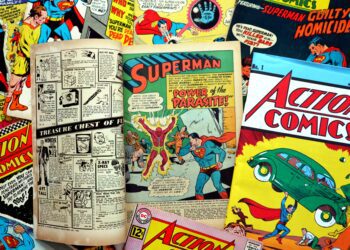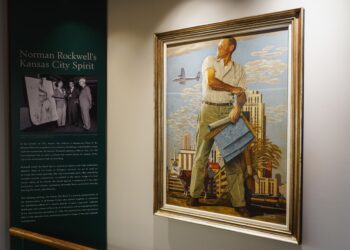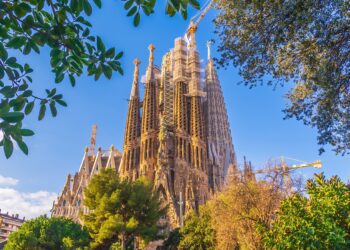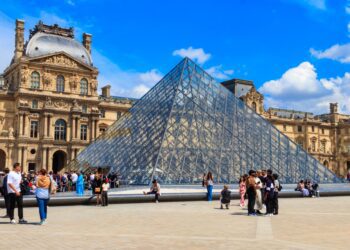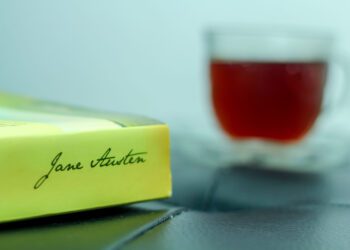The tweeting and chirrupping has competition though: a sound system has been set up by Gê Viana, the speakers interspersed with the artist’s collages of forest fauna and old reggae maranhense parties. The subgenre of reggae that flourished in the Brazilian state of Maranhão, melodic and perhaps a bit sexier, booms across the gallery space. If this is the kind of alternative consciousness being encouraged, maybe I’m down with it. Whether the festivities are appreciated by Nádia Taquary’s bronze bird-women is unclear however. They don’t seem party types: their eagle heads bowed, they pray and adopt yogic-style poses around a great yellow tree, beaded branches hanging low from a bronze trunk. It is titled Ìrókò: The Cosmic Tree, and represents the orisha lord of ancestry in Candomblé, the Afro-Brazilian religion. More objects of worship are apparent too in a series of “altars” and “guardians” by French artist Carla Gueye, black clay obelisks with protruding breasts sat on beds of charcoal. Such votives become a recurring theme throughout the show, symbols of belief in this busiest of environments.
Specific materials reappear throughout the exhibition, too. Gueye’s briquettes are recalled in Emeka Ogboh’s The Way Earthly Things Are Going, a darkened room in which a series of spotlit tree trunks are embedded in circles of charcoal. Looped chanting emerges through speakers embedded in the wood. There’s charcoal, too, in Antonio Tarsis’s Orchestra Catastrophe: Act 1. Lumps of the stuff suspended on pendulums rhythmically hit a series of drums. Tree trunks pop up several times too, such as in Indigenous American composer Raven Chacon’s collaboration with producer Laima Leyton and former Sepultura drummer Igor Cavalera. The wood is again spotlit in spectacular fashion and soundtracked, this time with a composition inspired by Brazilian Indigenous music.
Fabric and textiles, knotted, pleated and tied, are everywhere: Theresah Ankomah has wrapped the biennale pavilion in multiple nets Christo-style. Indo-Caribbean artist Suchitra Mattei invites us into an elegant tent made from twisted sari material and Ana Raylander Mártis dos Anjos has created a series of floor-to-ceiling pillars from found fabric that run throughout the show. On each level is one of Otobong Nkanga’s beguiling tapestries of the natural world (or the natural world despoiled) while Laure Prouvost’s giant kinetic pink textile orchid suggestively floats up and down the height of the building’s atrium.
This welcome bout of realism is continued in a multi-work presentation by one of Brazil’s most interesting artists. Gervane de Paula hails from Mato Grosso, which is called a “hinterland” state, and he aggressively plays with the cliches attached to rural culture, making hybrid wooden animals that mess with the vernacular art traditions of the region. Turning the cute souvenir on its head, two birds sport pistols for beaks. More disturbing still, the base on which they perch is marked “Comando Papo Vermelho”, a play on the name of one of Brazil’s biggest drug gangs. Like other artists in the biennale, de Paula has built an altar, but his is a cross with a Perspex front revealing it to be packed with prescription drugs: the artist’s sculpture is playful even as it riffs on the often grim reality of life beyond Brazil’s major centres.



